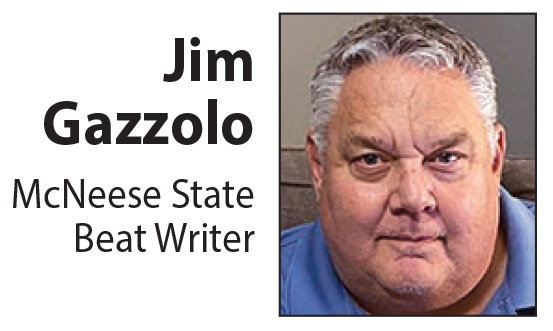Jim Gazzolo column: Pros, cons of increasing scholarships
Published 11:00 am Thursday, August 1, 2024
The landscape in college athletics is about to shift once again.
The NCAA is expected to make massive increases in scholarship allowances.
Power teams have been pushing for roster increases that would allow schools to reward far more athletic scholarships. Football on the Bowl Subdivision level would go from 85 to 105.
Currently, Championship Subdivision programs are allowed 63 scholarships. Those are often divvied up.
That is especially done with low-revenue sports such as baseball and softball. Both would also see scholarship increases.
What this would mean for smaller schools, like McNeese State, would not be known right away. Some might argue that more scholarships at larger programs could make it tougher for smaller schools to pick up players.
However, McNeese’s football program this year has added 20 FBS transfers, showing kids might start at big schools but often are willing to move down to see playing time.
Southland Conference Commissioner Chris Grant said he thinks his league could see benefits from the increases.
“It would allow us to understand more of what we have and what we are up against,” Grant said. “I don’t think it will hurt us. It may help us get some of those athletes who go to bigger schools as preferred walk-ons.
“I think we understand there will be players moving levels every year and this could give our schools more options. We may get more high schools and keep them for two years or so.”
Yet all teams within a conference aren’t on the same financial footing. So it is unlikely that all schools will have to make tough decisions as to which programs they are willing to invest in.
McNeese Athletic Director Heath Schroyer said he would not expect every school to jump to the top numbers in scholarships for all sports, especially right away.
“We will have to wait and see how that looks,” he said.
It is more likely that leagues, including the Southland, decide what is best for all schools in their conference and come up with their own limits. However, that could hurt league teams when they try to compete against richer conferences in the postseason.
“We discussed those possibilities,” Grant said. “We want to learn more about what it is and looks like when it is finalized. What we don’t want to do is make any moves that jeopardize our teams or put them at a disadvantage when they play on the national level.”
Getting Southland teams on the same page might be tough considering the differences in revenue from top to bottom. It was that financial split that had the league in trouble just three years ago.
It would seem though that if the conference wants to have any real level playing field, they have to have some type of common numbers.
One good thing though, the more scholarships given out means the more chances young athletes can get an education. That is the best of any of this.
—
Jim Gazzolo is a freelance writer who covers McNeese State athletics for the American Press. Email him at jimgazzolo@yahoo.com






